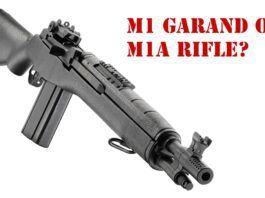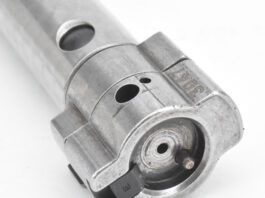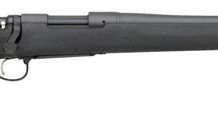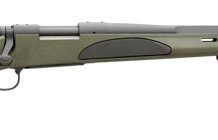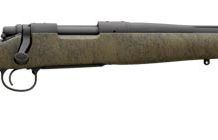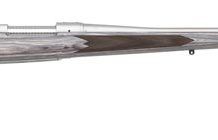Tactical Version Added to 700 SPS Line
Madison, NC – The new Model 700 SPS (Special Purpose Synthetic) Tactical combines the features that made the Remington Model 700 action the number one choice of police and military marksmen...
Remington 700 VTR
Madison, NC – Remington announces the new Model 700 VTR (Varmint Target Rifle).
Compact 700XCR Rifle Joins Remington Precision Bolt-Action Tactical Rifles
Madison, NC – Remington has expanded its tactical line of Model 700 XCR (Xtreme Conditions Rifle) precision rifles with the introduction of a versatile, quick-handling platform – the Model 700 XCR Compact Tactical.
Model 700 LSS Magnum Chambered in the Ultra-Velocity 257 Weatherby Magnum
Madison, NC – Pairing the classy Remington Model 700 LSS (Laminate Stock Stainless) Magnum with a truly classic, high velocity cartridge, the 257 Weatherby Magnum, is a match made in heaven.
Senator McCain on Guns: His Support for the 2nd Amendment
Louisville, KY—McCain: Gun rights are an important issue, and I wanted to share with you some highlights of the speech I delivered today at the National Rifle Association annual meeting. I think they will give you some good insight into my strong belief in the Second Amendment.
Remington Introduces Model R-25 Modular Repeating Rifle
…Louisville KY—Remington has announced it will build a 243/308/7mm-08 version of its R-15 VTR rifle introduced in Jan. 2008. The new gun is the Model R-25, a modular repeating rifle designed for big game hunters.
Top 10 Firearms Questions for Presidential Candidates
Gun Reports will submit a list of 10 firearms-related questions to the campaigns of John McCain, Hillary Clinton, and Barack Obama to discern who's the best gun-rights candidate.
Mayor Bloomberg Wants to Gag 2nd Amendment
The trial concerns a civil lawsuit trial beginning May 27 against Georgia gun dealer Jay Wallace, proprietor at Adventure Outdoors. The city alleges Adventure Outdoors is responsible for a disproportionate number of the firearms recovered from criminals in New York City.
NRA Gun Accident Prevention Program Celebrates 20th Anniversary
The National Rifle Association's Eddie Eagle GunSafe Program will be celebrating its 20th anniversary in Louisville, Kentucky, this week.
NRA to Auction Special Edition Springfield M1A Rifle
Collectors of historic firearms have the opportunity to bid on an exquisite, one-of-a kind Springfield M1A Rifle.
Most Popular Hunting and Shooting Brands
…Southwick Associates has announced the brands and products that hunters and shooters preferred most in 2007. This list has been compiled from the 19,288 surveys that hunters and target shooters returned from HunterSurvey.com and TargetshootingSurvey.com last year.
Robert Hoppe Sets 600 Yard NBRSA Record
Robert Hoppe of Nevada shattered the standing 600-yard light gun five-shot group record at a National Benchrest Shooters Association (NBRSA) registered match in Sacramento, California on October 28, 2007. Hoppe's 0.5823' certified record group was shot with Hornady 105-grain A-MAX bullets, using Varget powder from a 6mm Dasher (Light Gun) with a 28' Hart Barrel, Panda action with Jewell trigger, Dierks carbon fiber stock, and Nightforce 8-32X scope. …


























